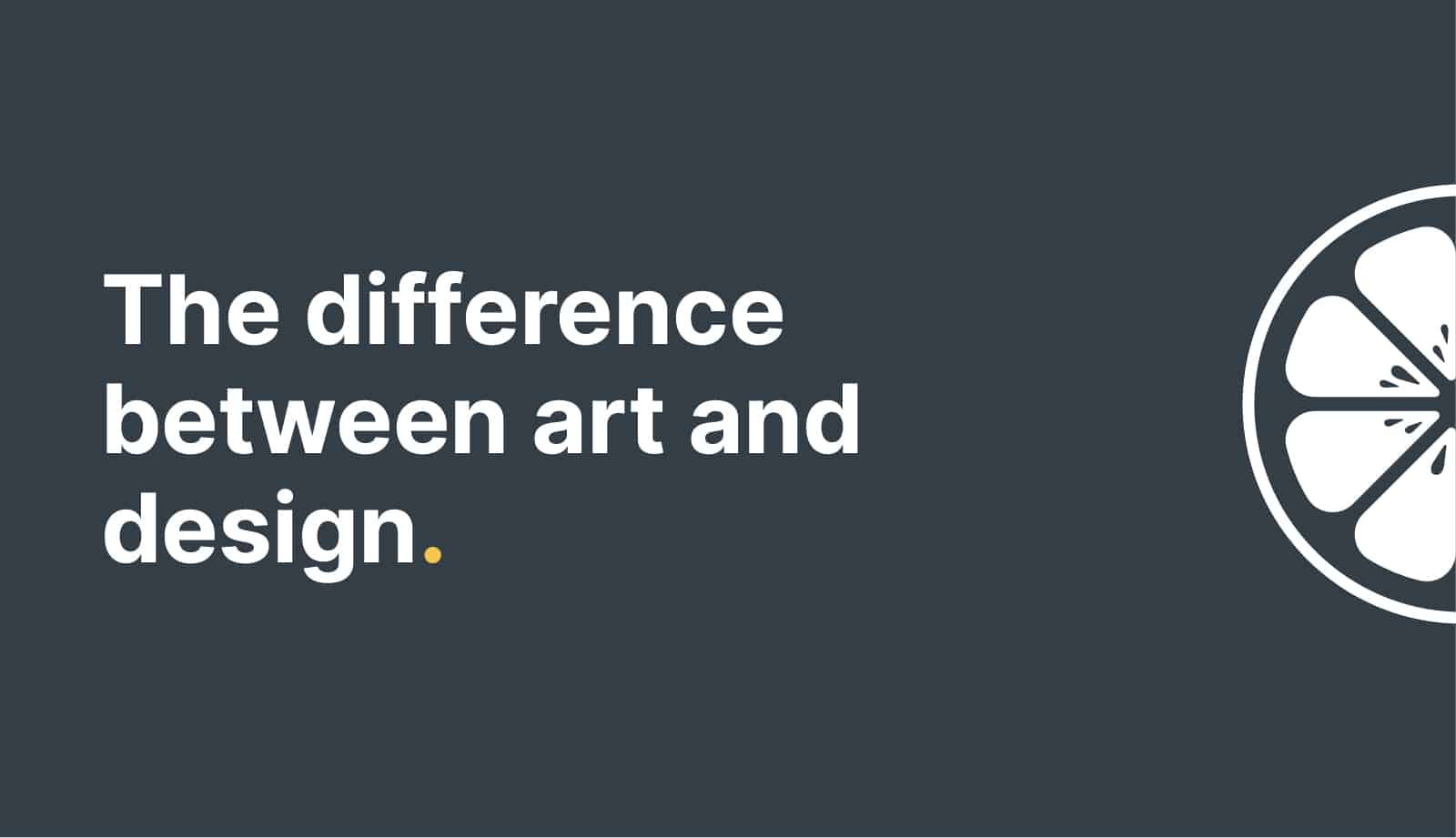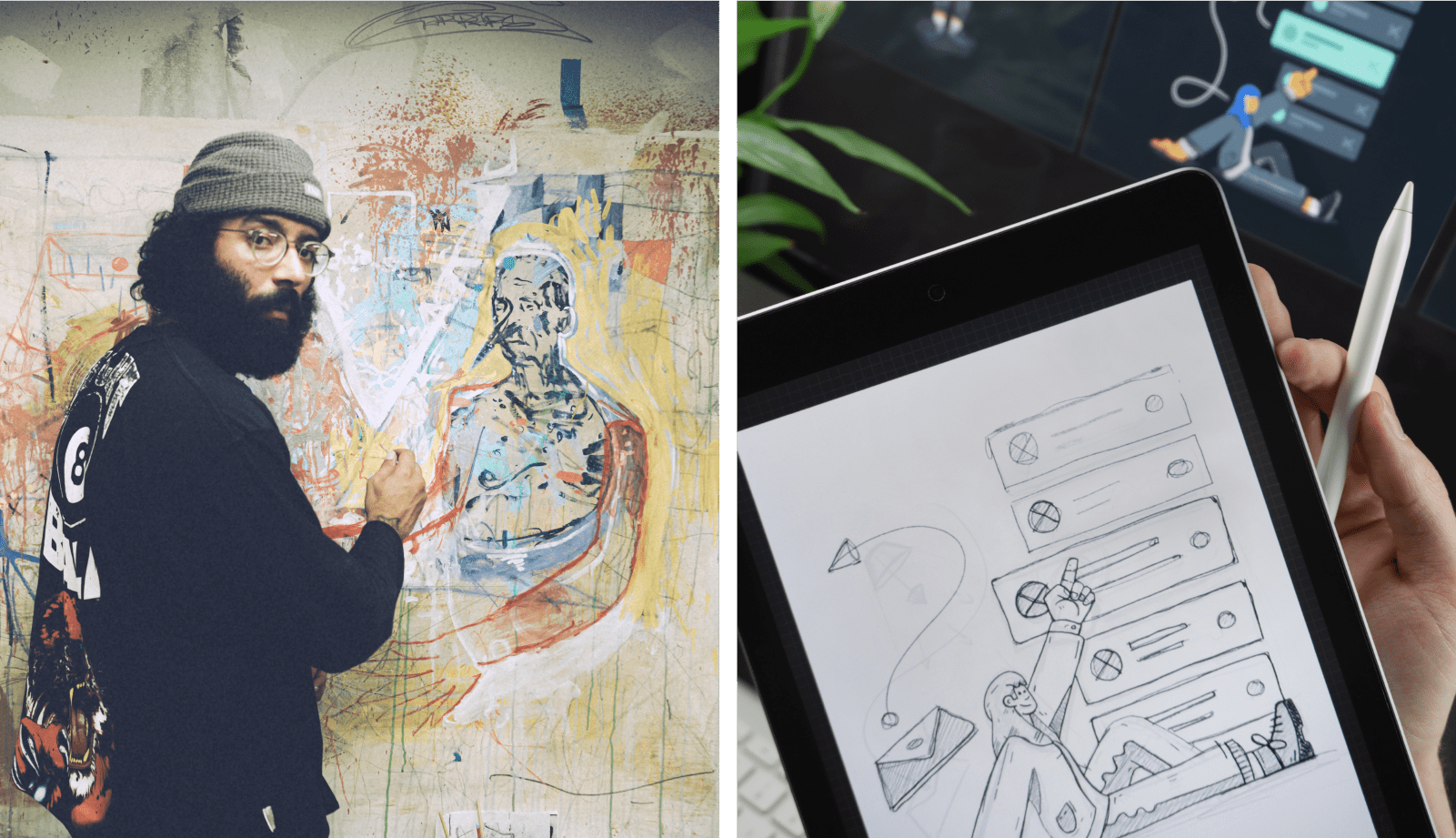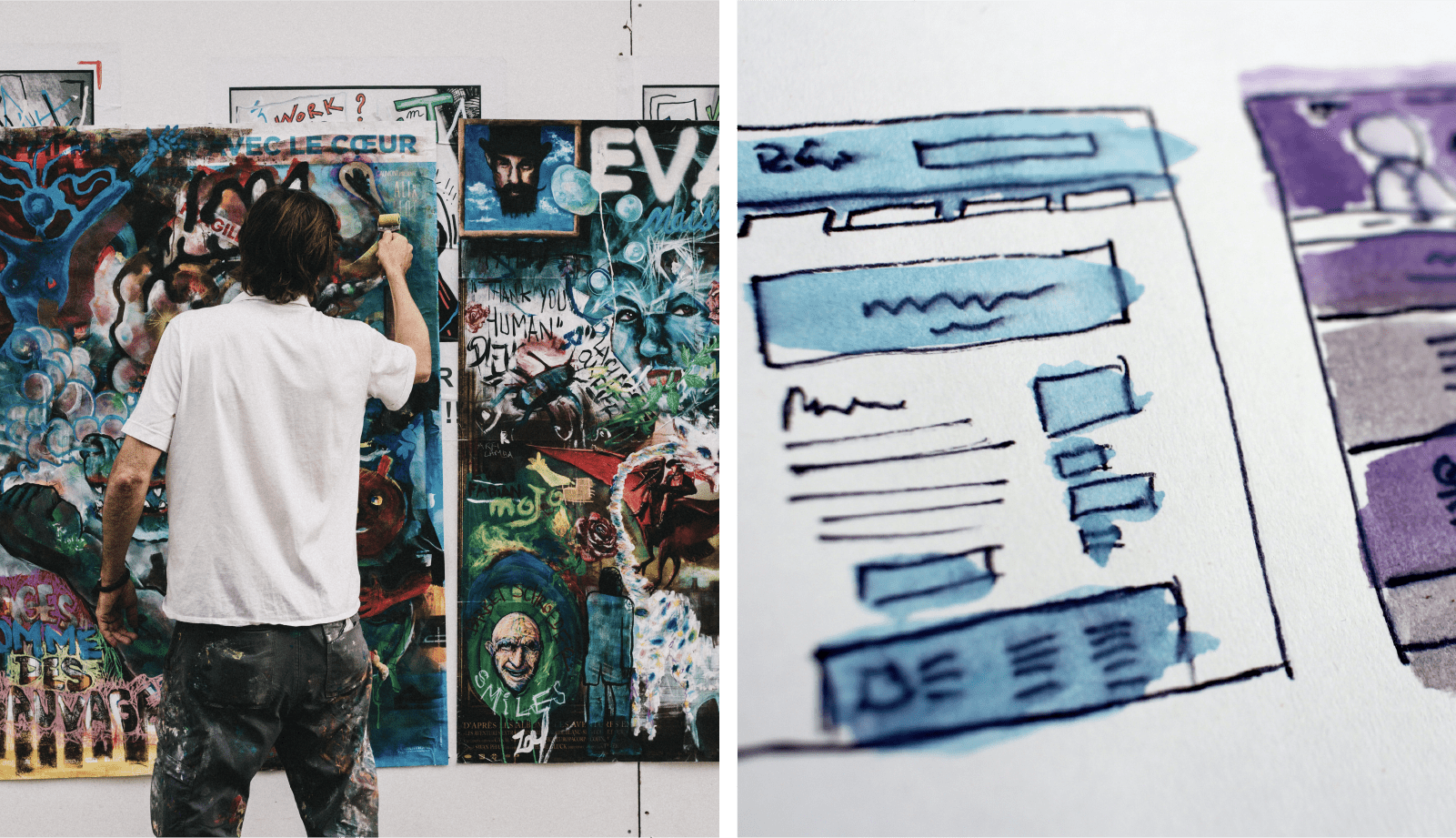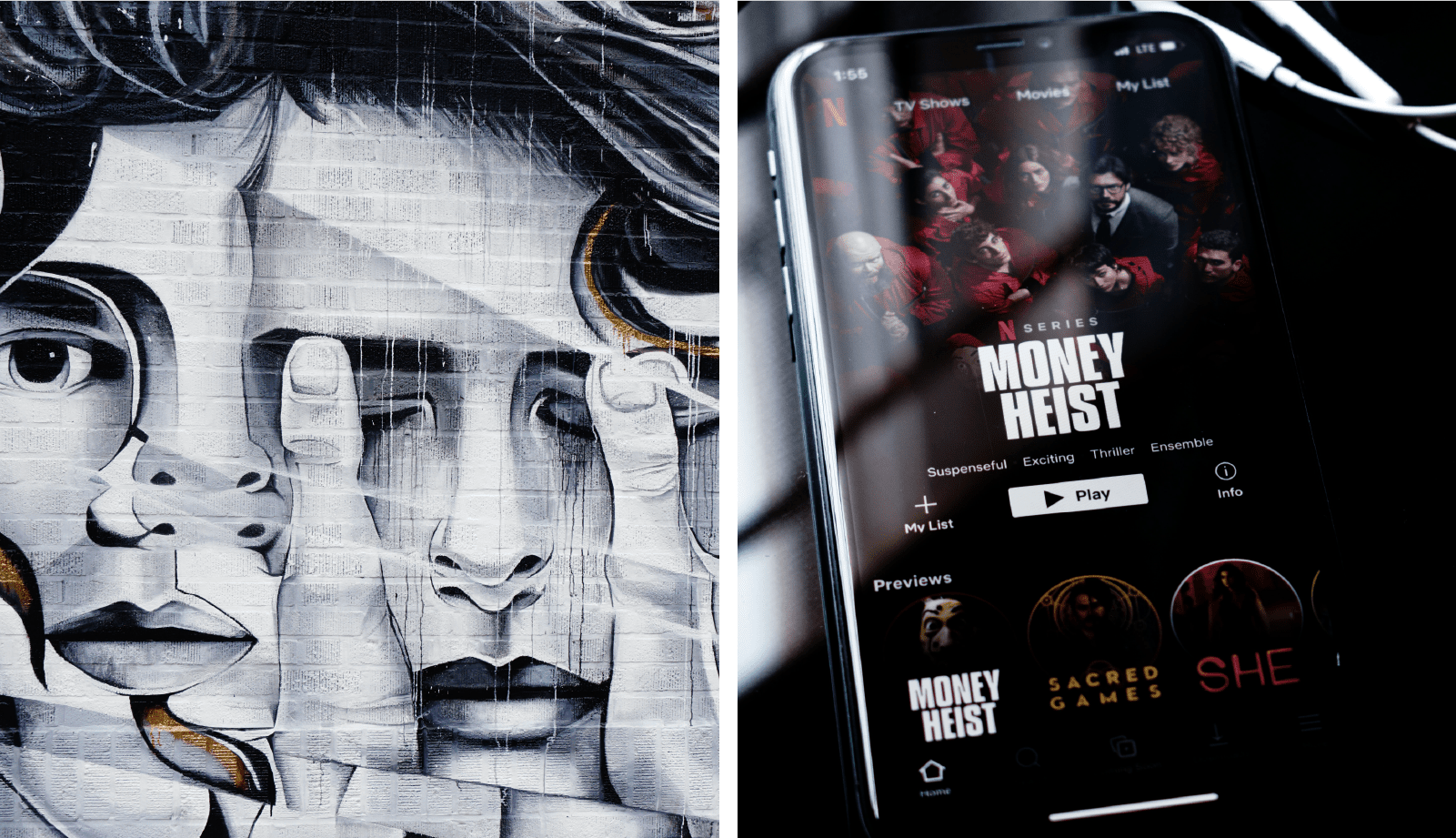
Design is not art. Here’s why.
When we think about visual creativity, art and design are two of the most common disciplines that come to mind. Both use colour, line, shape, spacing, composition and many other elements to create a visual outcome. But despite their similarities, both art and design have a set of very distinct qualities that set them apart.
Okay, but why does it even matter?
As creatives, we often see people confuse design outcomes they like with effective design. They evaluate design in the same way that they would art. Yet the purpose, process and data source behind them is completely different – meaning the way we evaluate them should be different, too.
To help you better judge the value of art vs design, we’ve unpacked the three key features that distinguish them.
Purpose: Expression vs function
Perhaps the most fundamental difference between art and design is purpose.
Art is about creative self-expression. It uses the infinite imagination of the artist to provoke thought and evoke emotion. It might tell a story or provide commentary on societal issues. It takes the opinions, feelings and observations of the artist and turns them into something others can experience.
Design, on the other hand, is the process of systematically planning and developing something for a specific purpose. It’s a means to an end. It provides a solution or serves a goal, like triggering a psychological response, informing a judgement or perception, helping the audience to complete an action or providing them with relevant information. Design simplifies the thought process and allows the audience to complete a task with less effort. It provides value for this audience in a way that art does not, and this lies within its purpose.
Art is expressive, imaginative, thought-provoking and emotive.
Design is functional, purposeful, influential and outcome-oriented.

Process: Intuitive vs systematic
While artists often have their own creative process, much of their work comes from intuition and instinct. Their output comes from personal style and preference and doesn’t need to follow a specific structure or process – unless the artist chooses to.
When we think about the design process, it is largely methodical and structured. Designers work backwards in their approach, focusing on the objective or goal of their design before using a creative process to get there.
In the context of brand, marketing or product development, design also needs to be consistent; it should be driven by the parameters of the brand and informed by the wants or needs of the audience, not the creative preference of the designer.
Art is instinctive, spontaneous, creative and internally driven.
Design is systematic, structured, consistent and informed.

Source of truth: Subjective vs objective
Art is subjective. It is a reflection of the way the artist sees and experiences the world, and can be interpreted many different ways by many different people. It’s founded in or influenced by personal feelings, preferences and opinions. For this reason, one person may completely resonate with a piece, yet another might truly dislike it.
While design may still be subjective in terms of whether a person likes it or not, it is still objective by nature. That is to say, it is not influenced by the personal feelings of the designer, but rather is created based on data about the communicator (e.g the brand) and the audience (e.g their consumer). With this in mind, design should be interpreted the same way by many different people within the audience group.
Art is subjective, intrinsic and based on the artist.
Design is objective, extrinsic and based on the audience.

Crossing the barriers between art and design
Of course, there are instances where art and design collide. Consider an artist that is commissioned by a brand to do a piece as part of an advertising campaign, or a design that serves a purpose while also making people feel something. An artist could apply design principles to their work, and a designer could let their personal style inspire their creative direction.
But in essence, art is driven by expression, intuition and subjectivity, while design is led by function, structure and objectivity.
They’re similar, but not the same – so the way we judge their value needs to be different, too.
